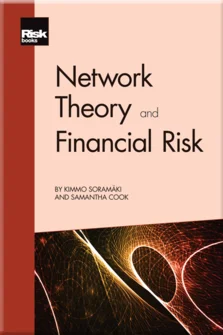Uncovering Latent Structure: Clustering and Community Detection
Introduction to Financial Networks
Creating and Describing Networks
Identifying Important Nodes: Centrality Metrics
Uncovering Latent Structure: Clustering and Community Detection
Finding Hidden Links: Projection Networks
Fast Insights: Visualising Networks
Financial Cartography: Network Layouts
Brass Tacks: Complexity Reduction
Market Risk: Asset Correlation Networks
Liquidity and Operational Risk: Interbank Payment Networks
Counterparty and Systemic Risk: Exposure Networks
Community detection for networks refers to grouping the nodes of a network in such a way that the nodes within a group are more similar to each other or more connected to each other than to nodes in other groups. We have already seen a few methods for grouping nodes: core–periphery classification and strong and weak components, in Chapter 2. Community detection aims to uncover other types of network structure and, unlike the methods previously presented, may depend on link properties as well as link structure. Community detection is useful in financial networks, such as in portfolio optimisation. This chapter will present many different algorithms for community detection, each with background on the methodology and examples with real data.
MAXIMUM CLIQUE
A clique is a subset of the nodes in a network such that the corresponding sub-graph is complete. For instance, any subset of the nodes in a complete network form a clique. A maximum clique is the largest clique in a network, and may represent an important community within the network. An example is that, in a perfect core–periphery network, the maximum clique corresponds exactly to the set of core nodes. Figure 4.1 shows a
Copyright Infopro Digital Limited. All rights reserved.
As outlined in our terms and conditions, https://www.infopro-digital.com/terms-and-conditions/subscriptions/ (point 2.4), printing is limited to a single copy.
If you would like to purchase additional rights please email info@risk.net
Copyright Infopro Digital Limited. All rights reserved.
You may share this content using our article tools. As outlined in our terms and conditions, https://www.infopro-digital.com/terms-and-conditions/subscriptions/ (clause 2.4), an Authorised User may only make one copy of the materials for their own personal use. You must also comply with the restrictions in clause 2.5.
If you would like to purchase additional rights please email info@risk.net











